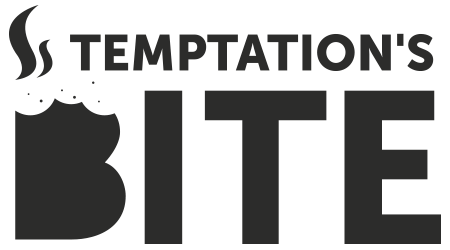Looking for:
E-learning uncovered adobe captivate 2017 pdf free. BE IN THE KNOW ON

Cautions: “lessons learned the hard way” that you can use to avoid common problems. Using ADDIE, as instructional systems Instructional design involves identifying, consolidating, and design, the three initial phases were performed, namely selecting the learning experiences necessary to educate learner Analysis, Design, and Develop.
– replace.me: Adobe Captivate
Stefano Allesina. I am a theoretical ecologist studying mostly ecological networks. I am interested in the dynamics of large ecological communities, models for network structure, and the response of ecological communities to extinctions. My laboratory develops mathematical, computational and statistical tools for the analysis of ecological systems. ORNG Applications. Faculty can login to make corrections and additions. List All Timeline. No robust multispecies coexistence in a canonical model of plant-soil feedbacks.
Ecol Lett. PMID: View in: PubMed. Miller ZR, Allesina S. Metapopulations with habitat modification. Local stability properties of complex, species-rich soil food webs with functional block structure.
Ecol Evol. Tractable models of ecological assembly. Publisher Correction: Predicting coexistence in experimental ecological communities. Nat Ecol Evol. Predicting coexistence in experimental ecological communities.
Transcriptome resilience predicts thermotolerance in Caenorhabditis elegans. BMC Biol. Ecological networks: Pursuing the shortest path, however narrow and crooked.
Sci Rep. Phenotypic variability promotes diversity and stability in competitive communities. Gene regulatory network stabilized by pervasive weak repressions: microRNA functions revealed by the May-Wigner theory. Natl Sci Rev. Telling ecological networks apart by their structure: A computational challenge. PLoS Comput Biol. Reconciling empirical interactions and species coexistence.
Effect of population abundances on the stability of large random ecosystems. Phys Rev E. Coexistence of many species in random ecosystems. Network spandrels reflect ecological assembly. Understanding the role of parasites in food webs using the group model. J Anim Ecol. Temporal dynamics of gene expression in heat-stressed Caenorhabditis elegans.
PLoS One. Self-regulation and the stability of large ecological networks. Higher-order interactions stabilize dynamics in competitive network models. Grilli J, Allesina S. Last name analysis of mobility, gender imbalance, and nepotism across academic systems. And, not or: Quality, quantity in scientific publishing. Beyond pairwise mechanisms of species coexistence in complex communities.
Feasibility and coexistence of large ecological communities. Nat Commun. Trends Ecol Evol. Modularity and stability in ecological communities. Am Nat. Ocean acidification affects competition for space: projections of community structure using cellular automata. Proc Biol Sci. Effect of localization on the stability of mutualistic ecological networks. Predicting global community properties from uncertain estimates of interaction strengths.
J R Soc Interface. Predicting the stability of large structured food webs. Selection on stability across ecological scales. Metapopulation persistence in random fragmented landscapes. Ten simple empirical rules for writing science. Stability and feedback levels in food web models. The scientific impact of nations: journal placement and citation performance.
Correlation between interaction strengths drives stability in large ecological networks. With great power comes great responsibility: the importance of rejection, power, and editors in the practice of scientific publishing.
The dimensionality of ecological networks. The ghost of nestedness in ecological networks. Future impact: Predicting scientific success. Allesina S. Ecology: The more the merrier. Does sex speed up evolutionary rate and increase biodiversity? Allesina S, Tang S. Stability criteria for complex ecosystems. Spatial guilds in the Serengeti food web revealed by a Bayesian group model. Relevance of evolutionary history for food web structure. Measuring nepotism through shared last names: the case of Italian Academia.
Rojas-Echenique J, Allesina S. Interaction rules affect species coexistence in intransitive networks. Allesina S, Levine JM. A competitive network theory of species diversity. Food webs: ordering species according to body size yields high degree of intervality.
J Theor Biol. Frequency-dependent selection predicts patterns of radiations and biodiversity. Predicting trophic relations in ecological networks: a test of the Allometric Diet Breadth Model. Characterizing a scientific elite: the social characteristics of the most highly cited scientists in environmental science and ecology. Allesina S, Pascual M. Googling food webs: can an eigenvector measure species’ importance for coextinctions? The assembly, collapse and restoration of food webs.
Functional links and robustness in food webs. Using food web dominator trees to catch secondary extinctions in action. Food web models: a plea for groups. Parasites in food webs: the ultimate missing links. A general model for food web structure. Phenotypic plasticity opposes species invasions by altering fitness surface. PLoS Biol. Allesina S, Bodini A. Who dominates whom in the ecosystem? Energy flow bottlenecks and cascading extinctions. Allesina S, Ulanowicz RE.
Cycling in ecological networks: Finn’s index revisited. Comput Biol Chem. To see the data from this visualization as text, click here. Year Publications 2 1 2 5 4 5 4 3 2 8 4 9 3 7 1 3 1 To return to the timeline, click here.
